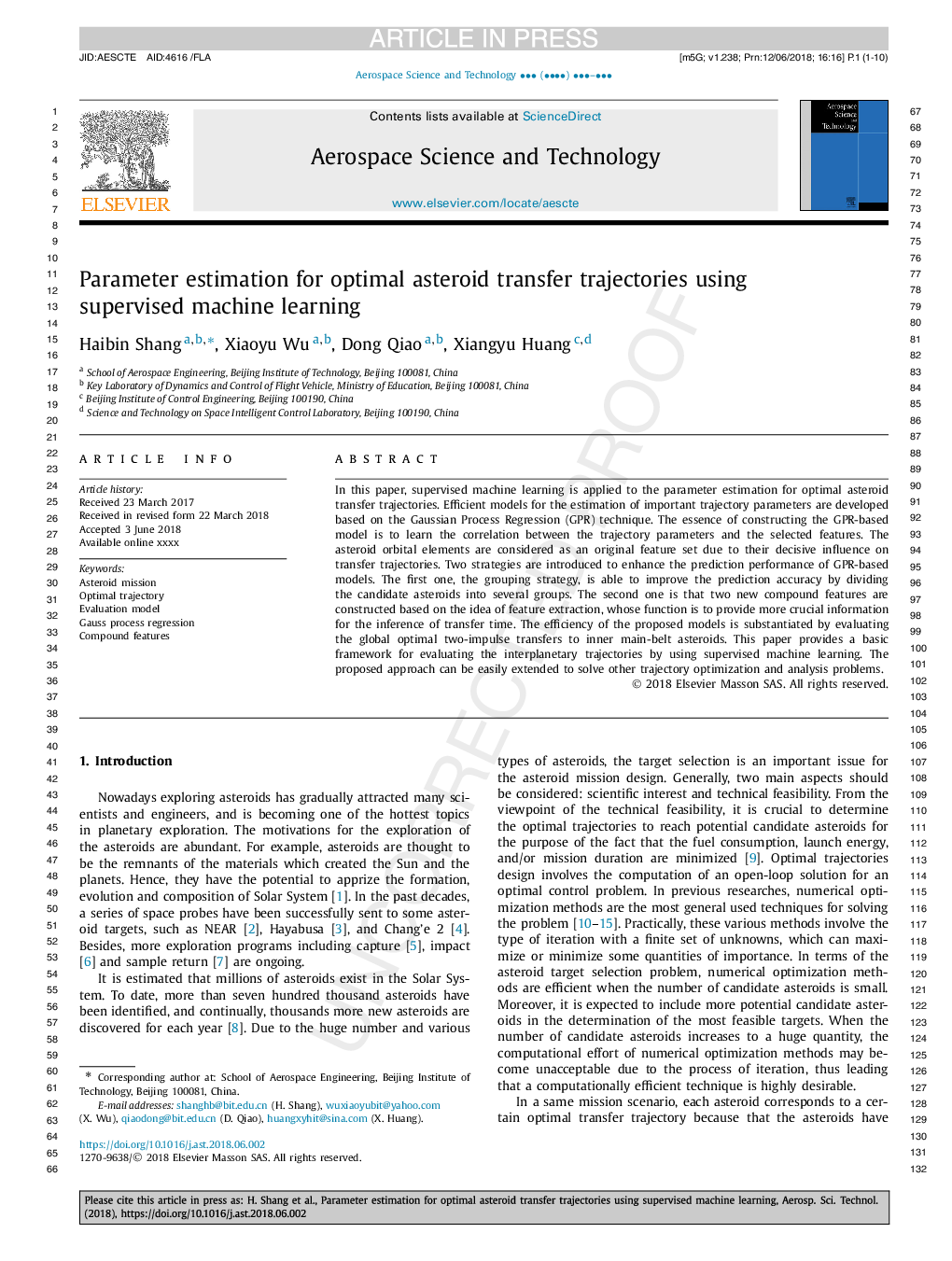| Article ID | Journal | Published Year | Pages | File Type |
|---|---|---|---|---|
| 8057430 | Aerospace Science and Technology | 2018 | 10 Pages |
Abstract
In this paper, supervised machine learning is applied to the parameter estimation for optimal asteroid transfer trajectories. Efficient models for the estimation of important trajectory parameters are developed based on the Gaussian Process Regression (GPR) technique. The essence of constructing the GPR-based model is to learn the correlation between the trajectory parameters and the selected features. The asteroid orbital elements are considered as an original feature set due to their decisive influence on transfer trajectories. Two strategies are introduced to enhance the prediction performance of GPR-based models. The first one, the grouping strategy, is able to improve the prediction accuracy by dividing the candidate asteroids into several groups. The second one is that two new compound features are constructed based on the idea of feature extraction, whose function is to provide more crucial information for the inference of transfer time. The efficiency of the proposed models is substantiated by evaluating the global optimal two-impulse transfers to inner main-belt asteroids. This paper provides a basic framework for evaluating the interplanetary trajectories by using supervised machine learning. The proposed approach can be easily extended to solve other trajectory optimization and analysis problems.
Keywords
Related Topics
Physical Sciences and Engineering
Engineering
Aerospace Engineering
Authors
Haibin Shang, Xiaoyu Wu, Dong Qiao, Xiangyu Huang,
